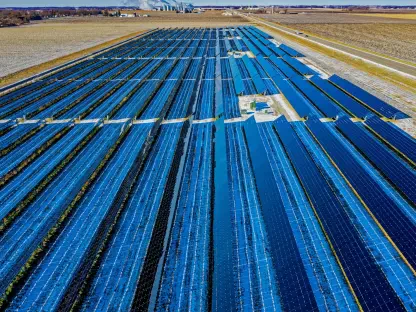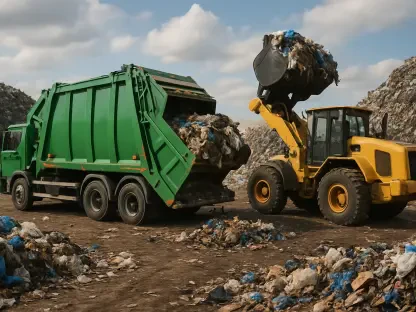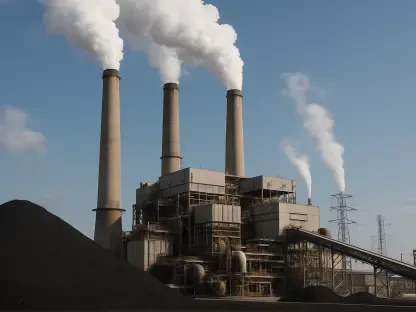In the ever-evolving landscape of international trade and economic policy, few possess the breadth of experience as Christopher Hailstone. An authority on energy management and grid security, Christopher brings valuable insights into how tariffs and trade agreements impact the energy industry and international relationships. As President Trump’s tariff strategies reshape global dynamics, we explore the implications with someone who’s been closely watching and analyzing these developments.
What prompted President Trump to impose tariffs on these specific countries such as Japan, South Korea, and Thailand?
President Trump targeted these countries mainly because they are significant suppliers of crucial components like battery parts and electrical transformers to the U.S. This move seems to be part of a broader strategy to encourage these nations to either open up their markets more to U.S. goods or to challenge their existing trade imbalances and policies. By implementing tariffs, the administration aims to pressure these countries into negotiations that would favor the U.S.
Can you explain why the U.S. is particularly focusing on countries that supply battery components and electrical transformers?
The focus on battery components and electrical transformers is reflective of the growing importance of energy storage and infrastructure in the U.S. These components are essential for the country’s energy systems and a shift towards renewable energy. By dealing with key suppliers, the U.S. seeks to secure its supply chain and potentially boost domestic production, which would support energy independence and economic resilience.
How were the specific tariff rates for each country determined?
The tariff rates have likely been influenced by a combination of strategic economic considerations and the specific trade relationships the U.S. has with each country. Japan saw a slight increase in its rate, possibly due to ongoing discussions about market access or because of specific trade imbalances. On the other hand, South Korea and Thailand’s rates remained the same, which could indicate the administration’s satisfaction with either their levels of compliance or ongoing dialogues.
What are the potential repercussions for countries that do not comply with President Trump’s call to provide greater market access or rescind tariffs against the U.S.?
Countries that choose not to comply with these demands might face escalations in their tariff rates or additional trade barriers. This could lead to strained diplomatic relationships and potentially disrupt trade flows that are beneficial to both parties. The broader impact could affect global supply chains and unsettle international market dynamics, particularly if retaliatory measures are taken.
Could you elaborate on President Trump’s statement regarding the possibility of modifying tariffs based on the U.S.’s relationship with each country?
This statement underlines the administration’s approach to tariffs as a flexible tool for negotiation. By suggesting that tariffs could be adjusted, the president is offering an incentive for countries to alter their trade practices in a way that benefits the U.S. It positions tariffs not just as a punishment, but as part of a larger strategy to reshape international trade relations based on economic and diplomatic engagements.
What influenced the decision to extend the 90-day pause on these tariffs until August 1?
The decision to extend the 90-day pause might have been influenced by ongoing negotiations that the U.S. wanted to see through before implementing new tariffs. It provides additional time for diplomatic discussions, potentially leading to more favorable deals or adjustments before enforcing the new rates. This extension also allows businesses time to prepare for the changing tariff landscape.
How is the trade agreement with China different from the ones being negotiated with the U.K. and Vietnam?
The trade agreement with China appears to be on a separate timeline and involves different variables compared to those with the U.K. and Vietnam. While specifics with China are still awaiting mutual approval, the U.K. has signed certain provisions, indicating more progress. Vietnam is in a different stage where confirmation is pending, showing varied levels of readiness and agreement complexity among these nations.
How might these tariffs impact the U.S. energy storage industry?
Tariffs on imports of essential battery components could lead to increased costs for the U.S. energy storage industry. This might result in higher prices for consumers and slower adoption of new technologies. However, it might also encourage domestic production and innovation if companies can find ways to manufacture these components locally, potentially leading to long-term industry growth.
What are the anticipated consequences of these tariffs on power generation costs?
The anticipated consequences could include an uptick in power generation costs due to higher prices for imported equipment and components. These costs might be passed on to consumers, leading to increased electricity prices. This could also challenge efforts to transition to renewable energy if the costs of establishing new systems become prohibitive.
How are companies in the U.S. expected to adjust to these new tariffs on imports?
U.S. companies might need to reassess their supply chains, possibly looking for alternative suppliers or shifting production domestically to mitigate the tariffs’ impacts. They may also explore cost-cutting measures or technology enhancements to absorb higher input costs, ensuring they remain competitive in the market despite these new financial pressures.
Can you discuss any previous instances where tariffs were used as a negotiation tool, and what were the outcomes?
Historically, tariffs have often been used as leverage in negotiations to achieve trade objectives. For example, the U.S. has used tariffs in past disputes with China to negotiate better trade terms and address intellectual property issues. While this strategy can lead to beneficial outcomes if it results in more balanced agreements, it also risks trade wars that can negatively impact economies if not carefully managed.
What safeguard measures, if any, are being considered to protect the U.S. economy from possible negative effects of these tariffs?
The government might consider measures such as subsidies for affected industries, developing domestic supply chains, or incentivizing innovations in technology to reduce dependency on imports. By bolstering internal capabilities, the U.S. could mitigate the economic fallout of tariffs and strengthen its economic resilience.
How do stakeholders in the affected industries view these tariffs, and what are their main concerns?
Stakeholders in the affected industries likely have mixed reactions. Some may appreciate the protectionist measures as a way to bolster American industry, while others could be concerned about increased costs and the potential for retaliatory tariffs from other countries. They might also worry about the uncertainty affecting long-term investment plans and supply chain agreements.
How might these tariffs influence the global supply chain for battery components and electrical transformers?
These tariffs could prompt shifts in the global supply chain, as countries and companies adjust trade routes and sourcing strategies to avoid higher costs. Some manufacturers might move operations to countries not affected by the tariffs, potentially creating new economic hubs and altering international business relationships as a result.
Do you have any advice for our readers?
For those navigating these changes, it’s crucial to stay informed and adaptive. Businesses should explore diversifying their supply chains and consider strategic partnerships that could mitigate risks. Investors and stakeholders might benefit from understanding the broader economic trends and seeking opportunities within domestic markets that may emerge from these tariff policies.









